Limerick History Facts and Timeline
(Limerick, County Limerick, Ireland)
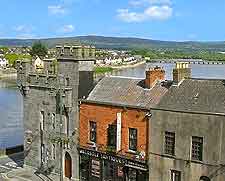
Limerick has a long history that is thought to date back to the 3rd century AD, when a battle was fought here. However, it's not until the 9th century that the lower reaches of the River Shannon were given their own name - Luimneach.
The earliest mention of Viking warriors in the Limerick area dates back to the 9th century AD, although it appears that a Danish settlement wasn't established here for another hundred years. The newcomers were undoubtedly attracted by the site's location as the first fordable point on the River Shannon. It was also on a defensible island formed by the Abbey River. It's thought that the settlement on King's Island at this time was known as Inis Sibhton, although there are numerous variations according to Irish and English spelling.
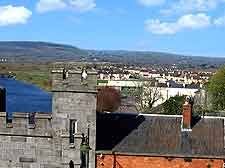
From the Middle Ages to the 16th Century
In 1173, history records that the Normans arrived in Limerick. Despite attempts by the town's Danish inhabitants to repel the invaders, the Norman forces finally prevailed.
In 1195, the town came under the leadership of the Lord of Ireland, Prince John. In 1199, Limerick was granted a charter which conferred city status. Then, in 1200, a castle was built here.
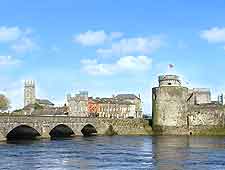
Defensive walls were added to enclose an area of land on King's Island, known as the English Town. In 1310, an Irish Town was developed south of the river, although it wasn't to be entirely finished until the end of the 15th century. Both of these towns were joined by Baal's Bridge, which was built in 1340. Between the 15th and 16th centuries, Limerick found itself 'beyond the pale' and was outside the area of English rule, although still under some Crown control.
Early Modern History
In 1650, Limerick was besieged by Henry Ireton, delegated commander of Cromwell's Parliamentarian forces. The city was defended by the Confederate Ulster Army under Hugh Dubh O'Neill, until his surrender in October 1651, and was once again to fall foul of conflict in England between sovereign and parliament. It was besieged twice between 1690 and 1691 by the forces of William of Orange.
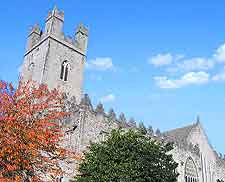
The final siege culminated in the Treaty of Limerick of 1691 and the flight of the defeated Catholic leaders. Those members of the Irish garrison who wished to leave the city were provided with transport to take them to
France. At the time of the siege, Limerick had grown to become the second-largest city in Ireland, with a population of around 4,000.
In 1760, work began on the dismantling of the restrictive medieval walls. A new Georgian town also started to be built. Known as Newton Pery, its streets are likely to have been laid out by Davis Ducart, a civil engineer and architect. Ducart was responsible for designing Limerick's Custom House, completed in 1769.
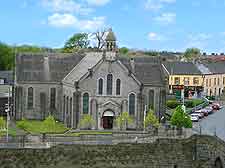
From the 19th Century to the Present Day
In 1841, a steady flow of emigrants left the quayside, heading for North America. During the Great Famine, the situation here was not as dire as in many other places in Ireland, which were more dependent on potatoes. Instead, Limerick's inhabitants were mainly involved in industries, such as leather and lace making, and brewing.
During the Irish War of Independence, there was open fighting in the city. In March 1921, Limerick's mayor and wife were shot by British soldiers. This and other deaths in the city became known as the Curfew Murders. Finally, in July 1921, a truce was declared between the IRA and British forces.
In the 1950s, the city's limits were further extended to accommodate its growing population. Many of the traditional industries residing within Limerick went into decline and were replaced by new businesses. From the 1980s on, there has been much renovation work to local historic buildings and landmarks, including the Merchant's Quay, the Civic Offices and the Bishop's Palace.
 Limerick has a long history that is thought to date back to the 3rd century AD, when a battle was fought here. However, it's not until the 9th century that the lower reaches of the River Shannon were given their own name - Luimneach.
Limerick has a long history that is thought to date back to the 3rd century AD, when a battle was fought here. However, it's not until the 9th century that the lower reaches of the River Shannon were given their own name - Luimneach.
 Defensive walls were added to enclose an area of land on King's Island, known as the English Town. In 1310, an Irish Town was developed south of the river, although it wasn't to be entirely finished until the end of the 15th century. Both of these towns were joined by Baal's Bridge, which was built in 1340. Between the 15th and 16th centuries, Limerick found itself 'beyond the pale' and was outside the area of English rule, although still under some Crown control.
Defensive walls were added to enclose an area of land on King's Island, known as the English Town. In 1310, an Irish Town was developed south of the river, although it wasn't to be entirely finished until the end of the 15th century. Both of these towns were joined by Baal's Bridge, which was built in 1340. Between the 15th and 16th centuries, Limerick found itself 'beyond the pale' and was outside the area of English rule, although still under some Crown control. The final siege culminated in the Treaty of Limerick of 1691 and the flight of the defeated Catholic leaders. Those members of the Irish garrison who wished to leave the city were provided with transport to take them to France. At the time of the siege, Limerick had grown to become the second-largest city in Ireland, with a population of around 4,000.
The final siege culminated in the Treaty of Limerick of 1691 and the flight of the defeated Catholic leaders. Those members of the Irish garrison who wished to leave the city were provided with transport to take them to France. At the time of the siege, Limerick had grown to become the second-largest city in Ireland, with a population of around 4,000.